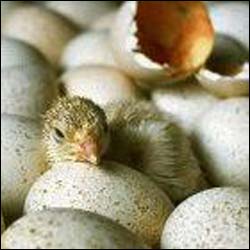Brazilians sequence genes of pig and poultry killers

The two Mycoplasma species cost pig and poultry farmers millions each year. Photo Credit: USDA
Brazilian researchers have sequenced the genomes of two bacteria that cause significant damage to pig and poultry farming in Brazil and elsewhere.
The researchers are now analysing the results in an attempt to identify bacterial proteins that could be used to develop vaccines and diagnostic kits against the bacteria.
Mycoplasma hyopneumoniae causes pneumonia in pigs and costs the Brazilian pig-breeding industry US$200 million each year. Mycoplasma synoviae is a related bacterium that causes respiratory disease in chickens and turkeys.
The researchers also identified the genetic sequence of a non-pathogenic strain of Mycoplasma hyopneumoniae in order to compare it to the pathogenic strain and determine which genes and proteins help the bacterium kill pigs.
Edmundo Grisard of the Federal University of Santa Catarina told SciDev.Net that the scientists identified several interesting targets for future research in this way.
Grisard and 90 other researchers from 25 Brazilian laboratories published the sequencing results in the latest issue of Journal of Bacteriology.
Brazil is the world’s second biggest producer of chicken meat. According to the Brazilian Agricultural Research Corporation (Embrapa), which participated in the sequencing study, Brazil produces 7.5 millions tonnes of it each year.
Media Contact
More Information:
http://www.zds-bonn.de/index.php?section_1&category=0&page=2All latest news from the category: Agricultural and Forestry Science
Newest articles

Superradiant atoms could push the boundaries of how precisely time can be measured
Superradiant atoms can help us measure time more precisely than ever. In a new study, researchers from the University of Copenhagen present a new method for measuring the time interval,…

Ion thermoelectric conversion devices for near room temperature
The electrode sheet of the thermoelectric device consists of ionic hydrogel, which is sandwiched between the electrodes to form, and the Prussian blue on the electrode undergoes a redox reaction…

Zap Energy achieves 37-million-degree temperatures in a compact device
New publication reports record electron temperatures for a small-scale, sheared-flow-stabilized Z-pinch fusion device. In the nine decades since humans first produced fusion reactions, only a few fusion technologies have demonstrated…





















